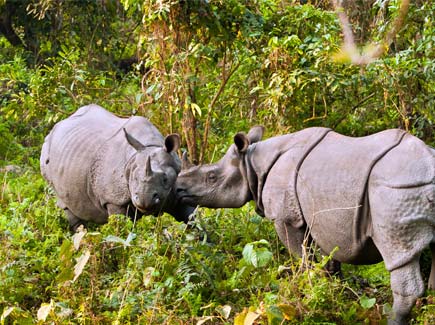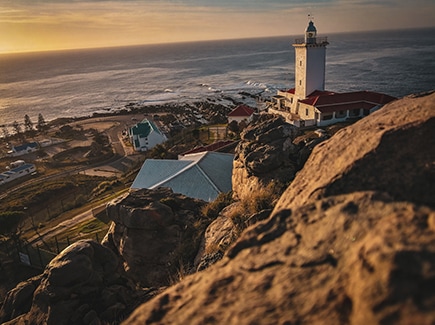If anyone asks me as to which was the most memorable and enjoyable tour in the year 2014 from amongst Veena World’s tours then I would hands down vote for the ‘women’s special Leh Ladakh tour’. In this tour we took 200 women tourists to Leh Ladakh’s astounding height of approximately 10,000 ft. and had a blast in the snowy desert of sorts. Finally we returned safe and sound. In our gang of 200 women there were even grandmothers who were well over 70 years old. Leh Ladakh is considered to be the most inaccessible and treacherous part of the Himalayas. Since it is situated at such a great height there is a great difference in the atmospheric pressure when compared to that at the sea level as a result of which it can get a bit difficult for people who originally stay somewhere close to the sea level to get acclimatised to reside at such huge heights. Therefore, a tour to Ladakh cannot be just described as an ordinary tour per se but an odyssey of courage and endurance. We led our gang of 200 women there and along with site visits we also grooved to popular Bollywood music in the Diskit camp located in the Nubra valley. In case we got tired we all used to take a whiff of the camphor necklace and restart the enjoyment with renewed vigor. The very last day of our trip was coincidentally the ‘Kargil Victory Day’ and thus we even got a chance to visit the military camp. The commander must have felt the need to give us this honor because here we were, a group of 200 women in the barren and treacherous atmosphere of Ladakh. We were then greeted and welcomed warmly in the ‘Fire and Fury’ transit army camp. Those soldiers who were from the Marathi regiment sang special welcome songs for us, Marathi songs and even recited poems. On account of this our women’s special Ladakh tour reached many notches higher than even the Khardung La. Now how would it be even remotely possible to forget such awesome memories? So even this year we have organized another women’s special tour to Leh Ladakh and the bookings have started with double the intensity.
Ladakh is basically a part of the Indian state of Jammu & Kashmir & is situated on its northernmost tip. Even though it is a part of Kashmir, its natural characteristics are exactly the opposite that of Kashmir. It’s synonymous to the situation wherein two brothers who are born in the same house but everything else about them is entirely different, in short their personalities are poles apart. The reason as to why Ladakh has such a different kind of geographical characteristic lies in the story of the birth of the Himalayas. Approximately 45 lakh years ago, the Indian sub-continent drifted towards a more stable land and the place of this meet up gave rise to huge folds of land which are today known as the Himalayas. This collision gave rise to an enormous amount of heat which ultimately led to the formation of the granite range of Ladakh. Hence, Ladakh showcases a deserted landscape, tall mountain ranges and wide roads. Ladakh means the ‘land of high passes’. If one enters Ladakh from Kashmir through the side of Sonmarg, then one can encounter Zoji La which is at a height of approximately 11575 ft. In the same way if we enter Ladakh from Manali then on the way we have to cross the Rohtang pass which is at an height of approximately 13,050 ft. Overall while traversing through Ladakh one needs to cross Chang La, Khardung La and Taglang La which are on an average at a height of about 15,000 ft. The most striking feature of Ladakh is that there is absolutely no sight of greenery here. The region consists of barren land and mountains which are snow clad in the months of winter but in spite of all this, Ladakh always imprints a mark of its beauty in your mind. Sometimes the mountain ranges get bathed in the golden yellow colours of the sunshine, sometimes they absorb a darker hue and look like a copper vessels turned upside down, whereas sometimes the mountain ranges get draped in the beautiful blue blanket of the sky and sometimes they look as mysterious as a woman in a black burkha. It feels as if all the colors from nature have fallen into a palette and these mountains get drenched in these colors all across Ladakh. Clouds do not venture into Ladakh owing to the tall Himalayan ranges. Therefore, rainfall in Ladakh is a rare possibility. Throughout the year Ladakh experiences only 90mm of rainfall but the temperature is very low and thus it is also known as a cold desert. Suru, Zanskar, Shyok, Nubra and Sindhu are the prime rivers here. An interesting feature of these rivers is that they receive water from the melting ice instead of rainfall. Once the ice melts, these rivers provide water for farming in the region.
In ancient times this region was a part of the Kushan dynasty and large stone engravings stating the same have also been found. Historically, Ladakh has been a witness to the separation of China from Tibet and in the 9th century, Niyam Gon from the Tibetan dynasty established independent rule here. In this period itself the influence of Buddhism grew in this region. In the 15-16th centuries Leh Ladakh was under the rule of the Namgyal dynasty. In the 19th century when the Mughal rule was disintegrating, Zoravar Singh (deputy of the king of Jammu-Gulabsingh Droga) emerged victorious and established ultimately Ladakh was incorporated into Jammu and Kashmir as a whole in 1846.Historically Ladakh was an important trade route from China to Europe and is of great importance in context to India’s security and defense today. Ladakh has been split into two districts namely-Leh and Kargil. Ladakh has been declared as an ‘Autonomous Hill development Council’ so that this barren land can progress at a quicker rate. Earlier Ladakh’s economy was dependent only on agriculture but today tourism has become an integral part of its economy too. Ladakh is the leading exporter of Apricots and Pashmina wool. Since Ladakh is situated at such a great height, it is considered as an ideal location for astronomy studies owing to its pollution free atmosphere. In the year 2000, the Indian Institute of Astrophysics9based in Bangalore) constructed a big telescope on top of the peak in Hanle valley within Ladakh’s mountain range. This telescope is operated via remote through Hoskote city in Bangalore.
Buddhism is widespread in Ladakh. However in the Kargil region, a majority of the people follow the Muslim religion(Shia faith).The Ladakhi language has originated from the Tibetan language and is also known as Bhoti. The Ladakhi language is written by using the Tibetan script. Since the Ladakhi and Tibetan cultures are almost similar to each other, their influence is also seen on the food served in this region. Barley is the prime foodgrain here. A variety of bread and noodles are prepared from barley & wheat flour. A few of the types include Thukpa, Skyu, Khambir and Pava. Vegetables, chicken and mutton are also incorporated into them. Gurgur Cha (tea) is prepared by adding salt and butter, Momos, noodles stew etc. are all Ladakhi specialities. Amongst all the dance forms in Ladakh, the most popular form is the Chham dance which is performed in the Buddhist monastery during religious festivals. The dance depicts the victory of good over evil and the dancers wear traditional costumes coupled with large masks.
Popular all over the world as India’s little Tibet, Ladakh’s most prized possessions are their ancient monasteries. They are the hub of its religious and cultural traditions. Ever since the inception of Buddhism in Ladakh which is believed to be around since the 2nd & 3rd centuries, these monasteries stand here disseminating the messages of peace till date. Most of the monasteries near Leh are Ladakh’s yellow hat, in other words they prime monasteries of the Gelugpa sect. One instantly is reminded of the Potala palace of Lhasa while observing this monastery on the mountain slopes of Ladakh. This 12 storey construction inhabits a variety of stupas, idols, Thangka, wall paintings and other such relics which envisage the ancient treasures of Buddhist art forms. The most prominent feature here is a 49 ft. tall statue of Maitreya Buddha. In the year 1970 this place was visited by the 14th Dalai Lama and it was then that this idol was constructed here. Ladakh’s second most important monastery is ‘Hemis’,it is considered as the biggest monastery both in terms of size and economics. It has a huge statue of Guru Padmasambhava, which is one of the attractions here. The annual Hemis Gompa Festival which is celebrated since the 17th century is famous all over the world. It is celebrated within the confines of the Hemis monastery which is square in shape. It is celebrated in order to commemorate the birth day of Guru Padmasambhava. The mask dance is the best attraction during this festival.
Every Indian visiting Ladakh has a wish to visit the ‘Pangong Lake’. Located at a height of approximately 14,270 ft., this lake shot into the limelight ever since it was displayed on the silver screen in the Amir Khan-Kareena Kapoor hit film -3 idiots. So from then onwards it has turned into a dream destination for all. This reservoir is spread across 134 km & 60% of it is located in that part of Tibet which is under China’s administration. The striking feature of this lake is that its color changes at different times of the day. The clear blue color makes one go ecstatic after witnessing it in person. Shahrukh Khan’s Dil se, Jab Tak Hain Jaan; Akshay Kumar’s Waqt; Saif Ali Khan’s Tashan are few of the Bollywood films which were shot near Pangong lake and have in a way wonderfully captured the mesmerising beauty of this place.
This year Veena World’s women’s special tour to Leh Ladakh begins in July but along with that there are also family tours to Ladakh which in turn have 4 tour options-7 day Leh Ladakh tour,10 day Leh-Ladakh-Kargil-Srinagar,11 day Leh-Ladakh-Manali,14 day Leh-Ladakh-Kargil-Srinagar-Manali. These tours begin in the month of May. A couple of these tours are already full; therefore’ you are kindly requested to book them at the earliest so that you can be all set to celebrate the festival of tourism in Little Tibet with Veena World.
























































Post your Comment
Please let us know your thoughts on this story by leaving a comment.